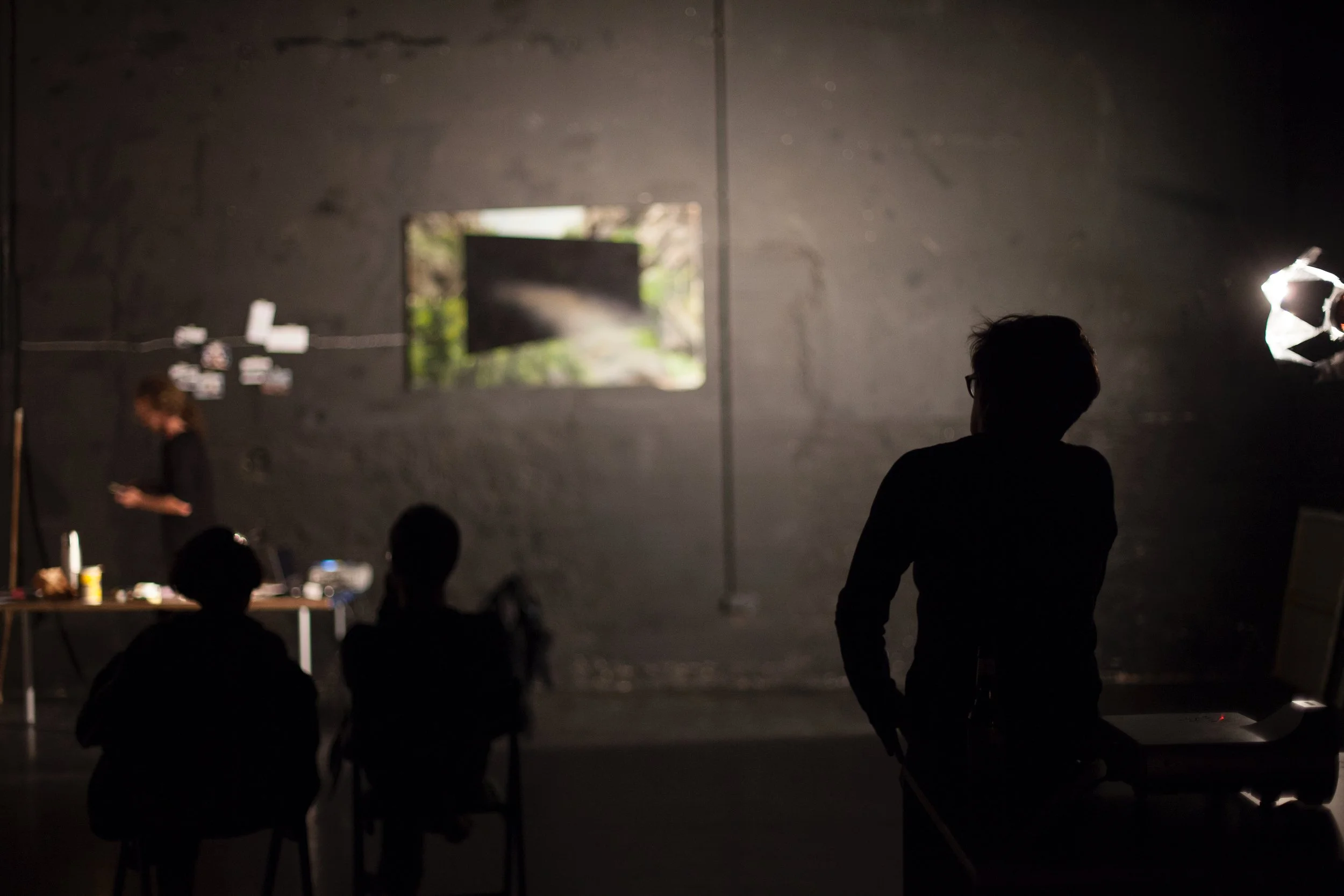Paratext #7
Presentación en Hangar, 11 de noviembre de 2015.
Hangar es un centro de investigación y producción artística en Barcelona, España.
2015
La presentación de Noris en Hangar se centró en la visualización del desarrollo creativo de su proyecto sobre el exilio y el desarraigo, la memoria histórica y las políticas migratorias contemporáneas.
Al tratarse de un proyecto pictórico en proceso, el artista tuvo claro desde el principio que no se trataría del clásico pase de diapositivas comentado por su autor. Dado que Hangar es un espacio en el que la imagen digital constituye la norma, consideró necesario destacar la unicidad plástica de la pintura, sin dejar de lado valores fundamentales como la experimentación, la investigación, la compartición y el código abierto. Por ello, Noris optó por un formato performativo que le permitiera satisfacer su necesidad de divulgación y, al mismo tiempo, crear algo que pudiera considerarse una obra en sí misma.
Su Paratext consistió en la realización en vivo de un mapa mental a lo largo de una de las paredes de la sala Ricson. En él se trazaban los orígenes del proyecto, sus referencias, descubrimientos, errores y las decisiones tomadas durante su desarrollo. El uso de diversos elementos y lenguajes —vídeo, proyección de imágenes, objetos, pinturas, dibujos, fotografías, notas, cartas y fotocopias— conectados mediante flechas y textos escritos sobre la pared, permitió al artista trasladar un sistema de organización de contenidos hipertextual al espacio físico.
La presentación, de unos cuarenta minutos de duración, fue muy bien recibida y alcanzó todos los objetivos propuestos. La obra resultante, un mural de quince metros compuesto por cincuenta y dos piezas, quedó posteriormente expuesta al público.
Hangar, 11 de noviembre de 2015, Barcelona. Fotografías: Marzia Matarese.















